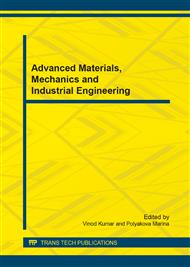p.714
p.718
p.723
p.731
p.736
p.743
p.747
p.753
p.758
Dynamic Experiments on a 1/4 Scale New-Styled Korean Traditional Wooden House
Abstract:
This research performed dynamic tests on a 1/4 scale test model of a new-styled Korean traditional wooden house to study its dynamic characteristics. The dynamic tests were performed both by the impact hammer test and the shaking table test of an El-centro N-S seismic wave. Together with these dynamic tests, structural analysis was also performed and the results were compared. The natural frequency from the impact hammer test was slightly higher than that from the shaking table test. The natural frequency from the eigenvalue analysis was about 16~33% lower than that from both the impact hammer test and the shaking table test. It can be deduced that the rotational stiffness of joints of analysis model were somewhat underestimated than those of experiment model.
Info:
Periodical:
Pages:
743-746
Citation:
Online since:
July 2014
Authors:
Keywords:
Price:
Сopyright:
© 2014 Trans Tech Publications Ltd. All Rights Reserved
Share:
Citation:


